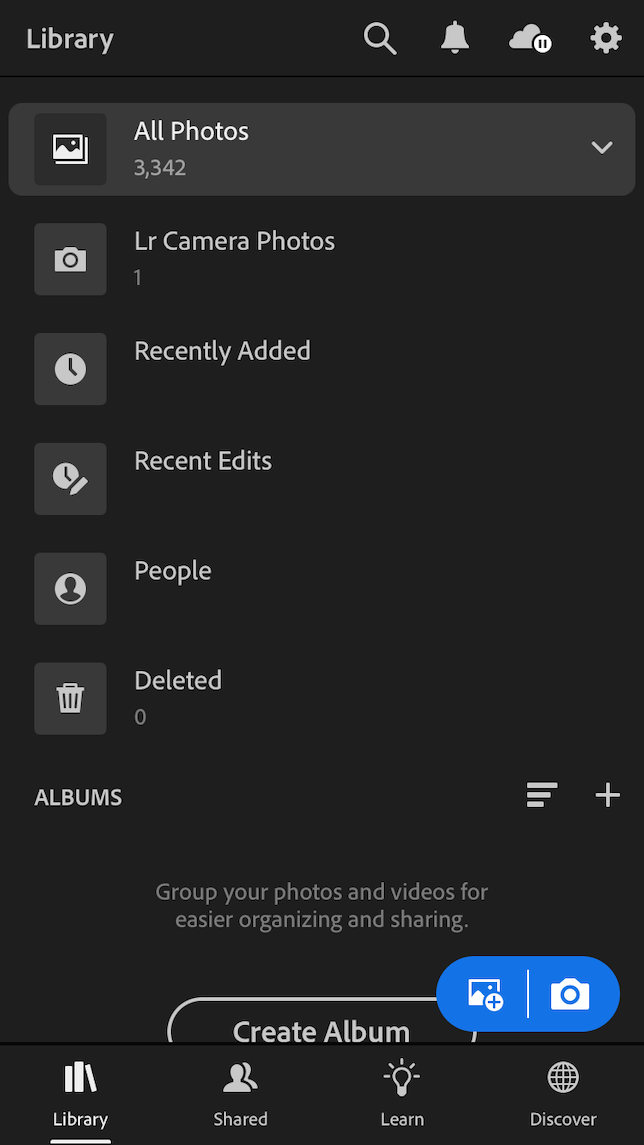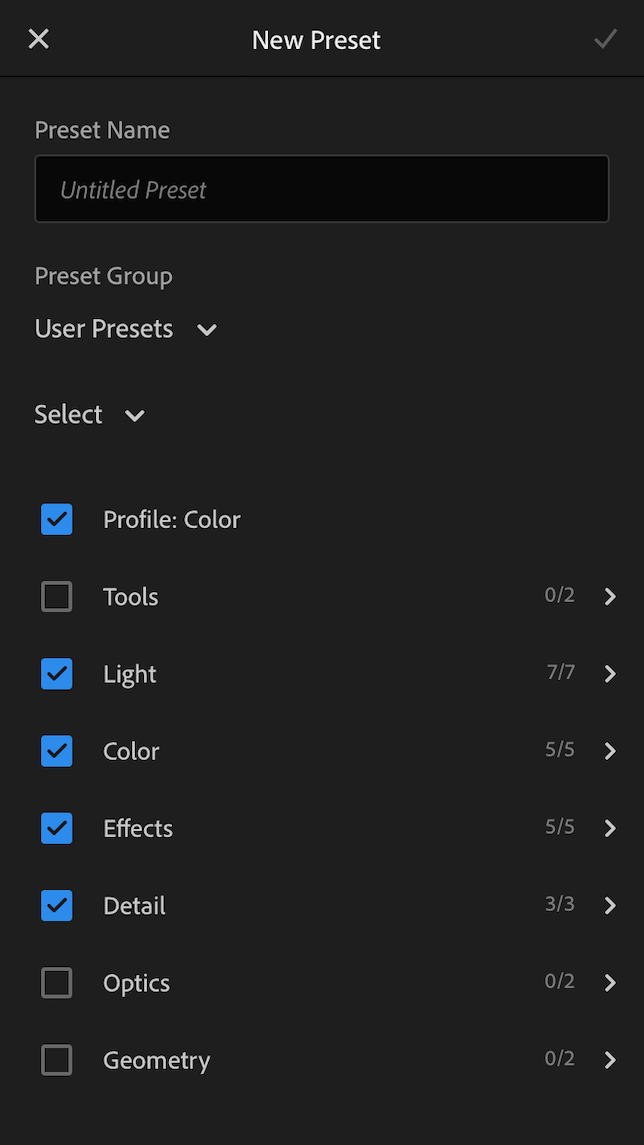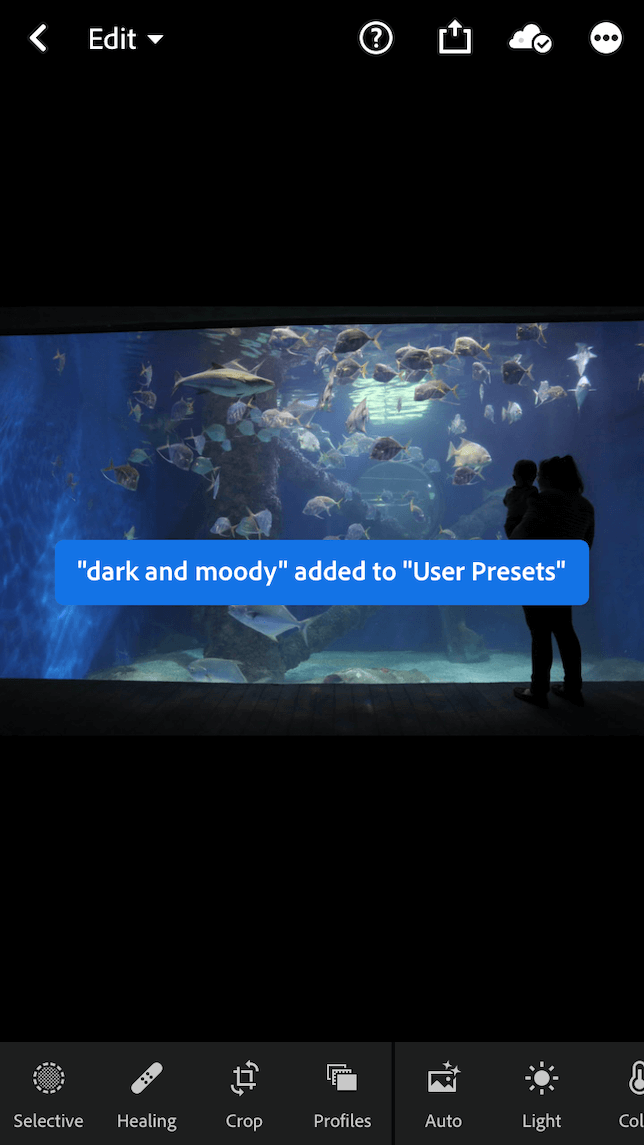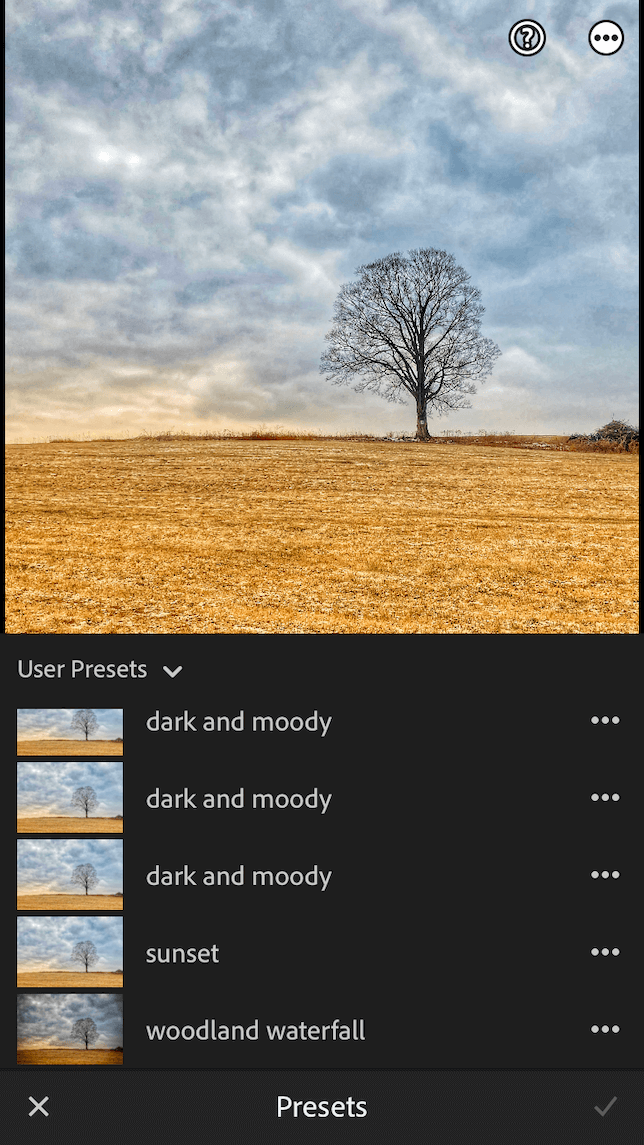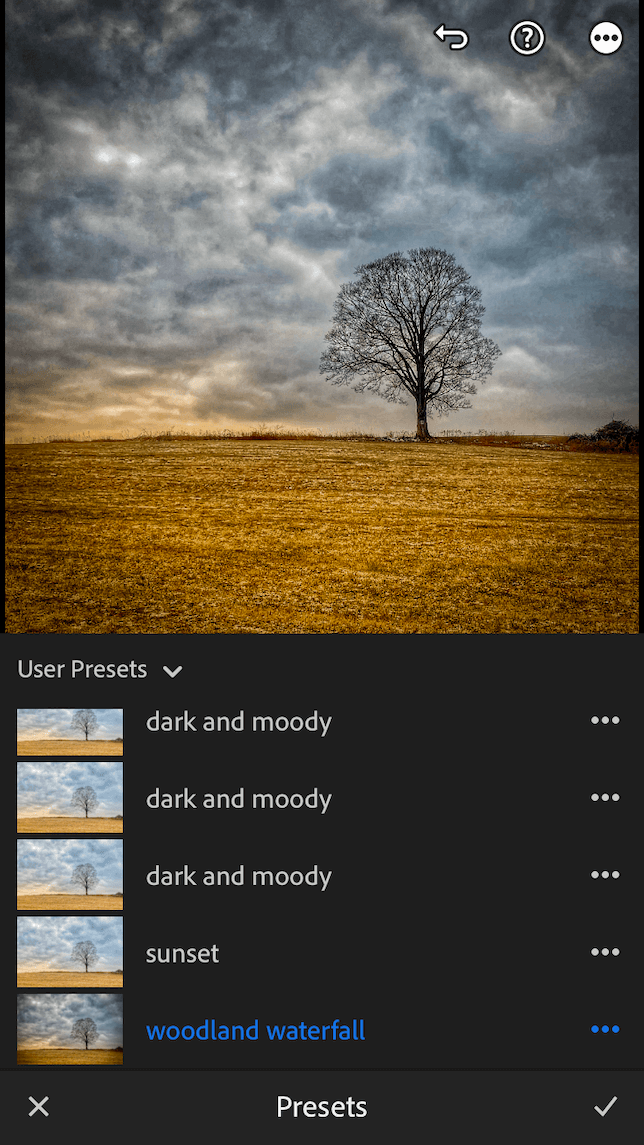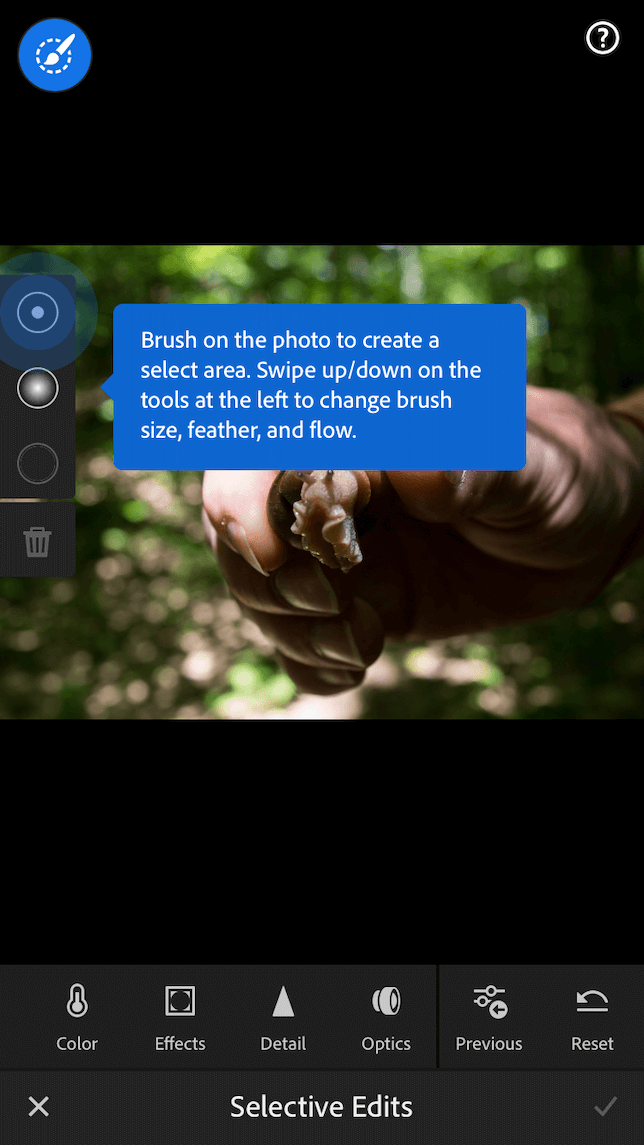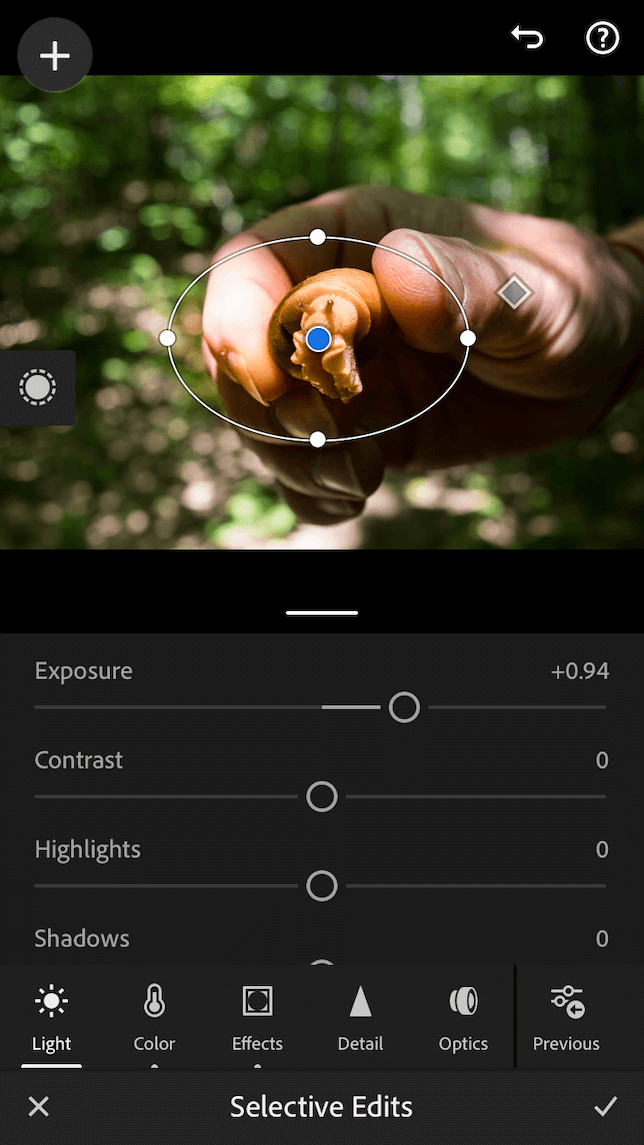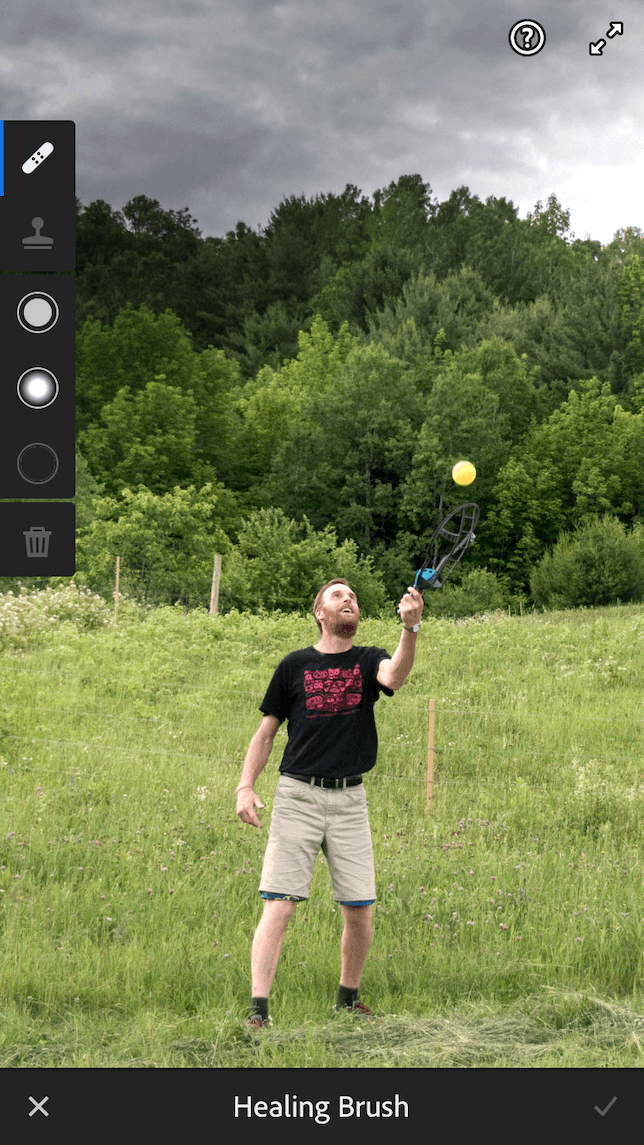How to Scroll Down on Lightroom Upload Screen
When it comes to editing photos on your iPhone, you accept a lot of choices. Lightroom is arguably i of the most powerful editing tools bachelor for iOS users, providing many of the same tools equally the premium desktop version of the software. This Lightroom tutorial will assistance you take reward of Lightroom presets, as well equally pro editing tools on your iPhone.
How to use Lightroom for iOS
Lightroom for iOS is an amazing tool for photographers. It is useful for beginners but also includes pro editing tools for avant-garde users. Many of these premium features are free to apply, simply like any loftier-level software, an upgrade allows you to use fifty-fifty more avant-garde-level tools like editing RAW images, batch-editing multiple photos, and making selective adjustments to your photos.

The Adobe Creative Deject Photography Plan includes both Lightroom and Photoshop CC for desktop, Lightroom for mobile and web, and 20 GB of cloud-based storage for $9.99 a month. You tin also upgrade to 1 TB of storage for $19.99 a month.

How to upload photos to Lightroom iOS and organize them
Uploading and organizing your photos in Lightroom iOS couldn't be easier. Hither'due south how to add together new photos from your Camera Whorl to your Lightroom Library:
- When you open the Lightroom app on your iPhone, you volition automatically exist taken to your Lightroom photograph library.
- If you have previously added photos or are syncing photos automatically from Artistic Cloud (premium subscription), y'all will run into them here.
- If not, tap the Add Photos icon in bluish at the bottom of your screen.
- Choose From Camera Ringlet.
- Swipe the photos that you would like to add to Lightroom and then tap Add together.
Once you have added your photos to your Lightroom library, yous can further organize them into albums:
- Tap Create Album.
- Give your new album a proper name and tap Okay.
- To add photos to your new album, tap on the album and choose the Add together Photos icon.
- You will encounter a menu where you tin choose photos to add to your album (from All Photos, which is your Lightroom library, from Photographic camera Gyre, or from Files).
- One time you lot take chosen a location, select the photos that you want to add to your new anthology and tap Add.
Lightroom presets tutorial
Accept you tried using Lightroom presets on your photos? Presets are basically editing "recipes" that apply step-by-pace processing without requiring you to make all the changes individually. You can purchase Lightroom presets from many of your favorite photographers to emulate their manner, or you can create your own Lightroom presets. However you lot choose to practise this, Lightroom presets are fun to experiment with, and they help streamline your editing workflow.
How to go Lightroom presets on the iPhone app
At that place are a few dissimilar types of Lightroom preset file types: DNG, XMP, and ltrtemplate. The installation procedure may vary depending on file blazon, so spring to the instructions below that are relevant to the files you are installing.
A quick heads upwardly: It is far easier to install DNG files on your phone by first unzipping them on your desktop computer. And if you lot are installing XMP files, using Lightroom CC or Lightroom Classic CC on your desktop is mandatory.
How to add a DNG preset file to Lightroom
To add DNG files to your Lightroom mobile app:
- Download your free or purchased presets as a zipped file to your desktop estimator.
- Click on the file to unzip it.
- Upload the file to your favorite deject storage service, such every bit Dropbox, iCloud, or Google Bulldoze.
- On your iPhone, open up your cloud storage app and salve your presets to your iPhone. The process will vary slightly depending on which deject storage service you are using.
- Open Lightroom and tap Create Album.
- Give your album a name and tap on the Add Photos icon in blue.
- Depending on your cloud storage service, you will be prompted to choose From Camera Scroll or From Files to add your presets to your album.
- Select the DNG presets to add them to your anthology.
- Tap i of your new presets, then tap the iii dots in the upper right.
- Choose Create Preset.
- Requite your preset a proper noun and tap the checkmark to salvage information technology for future use.
How to add XMP or ltrtemplate preset files to Lightroom
You will need a subscription to Lightroom for desktop in gild to import XMP or ltrtemplate files to Lightroom iOS. You can and then follow these instructions:
- Download the preset files and open Lightroom Classic CC.
- Navigate to the Develop mode.
- Click on the + next to the give-and-take Presets in the left sidebar.
- Click on Import Presets, then navigate to the files on your calculator and import them.
- Get to whatever photo in your Lightroom library and click on the chosen preset to apply it to your photo.
- Now you will need to sync your files to your Lightroom Mobile app. Showtime by calculation all your presets to a folder and dragging them to the Collections department on the left sidebar.
- Make sure the Sync icon is enabled next to your new preset folder.
- Open up Lightroom on your iPhone and go to the newly synced binder.
- Tap ane of your new presets.
- Choose one of your new presets, and then tap the 3 dots in the upper right.
- Tap Create Preset.
- Give your preset a proper name and tap the checkmark to save it for time to come use.
How to use Lightroom presets on your own photos
Subsequently you've imported your new Lightroom presets, you'll likely be anxious to try them out. Here's how to apply them to your own photos:
- Import the photo you want to work on into Lightroom.
- Scroll through the editing icons at the bottom of the screen and tap Presets.
- If you want to apply presets you've imported, tap User Presets.
- A menu of all your imported and created presets will announced. Simply choose the one you want to employ to your photo.
- Tap the checkmark in the lesser-right corner.
- Tap the share icon to save the photograph to your Camera Roll.
How to utilize a preset to multiple photos at one time
Did you know you can utilise presets — or any editing you've done to an private photograph — to as many other photos as you lot want? This process is called "batch editing," and it makes your workflow so much easier! Here's how to employ presets to multiple photos at once:
- Edit a unmarried photo using a preset, in improver to any boosted adjustments.
- Tap the iii dots in the upper corner and choose Copy Settings.
- Now, go dorsum to your Lightroom photo library and long-printing all the photos you desire to apply these settings to.
- Tap Paste at the bottom of the screen, then tap Apply.
- From here, you tin can make any boosted adjustments as desired.
How to tone down a Lightroom preset
Wouldn't information technology be lovely if there were a unmarried slider to tone downward a preset that you've applied to your photo? Unfortunately, there isn't. But the skilful news is that y'all can tap on any of the editing icons to see what enhancements were made as function of the preset. After that, you can make adjustments using sliders until you are happy with the results.
How to make your ain preset in Lightroom
Whether you're starting from scratch or tweaking a preset yous've already imported, you can hands create new presets from edits yous've made to individual photos. In fact, creating presets becomes addictive once you get started. Hither's how to make your own preset in Lightroom mobile:
- Open up a photo in Lightroom mobile.
- Apply a preset if y'all want to apply it every bit a jumping-off point, or use the editing sliders until you achieve the look you're going for.
- Tap the three dots in the upper-right corner.
- Select Create Preset.
- Requite your preset a proper name and tap the checkmark.
- Your new preset will be available under User Presets when you are set up to utilise it.
Now that you have some basic editing skills under your belt, allow'due south take a look at some of the more advanced editing tools in Lightroom iOS. Note that many of these features do require a paid Lightroom subscription or Adobe Photograph Program.
one. How to use the Lightroom Camera to shoot in RAW
The ability to shoot in the RAW file type and edit RAW photos gives y'all a lot more flexibility for advanced editing. If you are sporting an iPhone 12 Pro or later (with iOS xiv.3 or later), you already have the capability to shoot in RAW. Brand certain RAW is your chosen format in your Camera settings for iPhone.
For those using older iPhone models, yous can notwithstanding shoot in RAW by using the Lightroom Camera app. Lightroom's RAW format is called DNG (Digital Negative). Here's how to use the Lightroom Camera to shoot RAW photos:
- Open the Lightroom app on your iPhone and tap the photographic camera icon at the bottom of the screen.
- You volition see the file format at the meridian of the screen. This volition announced as either DNG, which is Adobe'due south RAW format, or JPG. Choose DNG.
- You tin also use the Lightroom Camera to change settings that are normally fixed on your iPhone. The menu above the shutter button allows you to set the exposure compensation, shutter speed, ISO, and white balance.
- Once yous've called your settings, accept your photos equally usual.
2. How to brand selective adjustments in Lightroom mobile
Using the Selective edit tool, y'all can make edits to only ane office of a photo while leaving the residuum of it unchanged. This is great for lightening up your field of study'south face in a portrait or fixing a dark corner without altering your whole photograph. Hither'south how to make selective adjustments in Lightroom using either the Castor tool, the Radial Selection tool, or the Linear Selection tool.
- Open up the photo you want to edit in Lightroom.
- Cull Selective Edits from the bottom card.
- Tap + and choose the type of selective editor you want to employ. The Brush Choice tool lets yous select specific parts of your photo by brushing over them and applying edits. The Radial Pick tool lets you choose the shape and dimension of the region you desire to edit. And the Linear Selection tool lets you apply edits gradually across a region of a photo in a straight line, as wide or as narrow as you want.
- For the Brush Option tool, use your finger to paint over the expanse y'all desire to accommodate. This volition colour it carmine as you are brushing. Now employ the editing tools to enhance the area you have chosen.
- With the Radial Selection tool, tap the photograph in the spot you want to suit. A circumvolve will appear. Utilize your fingers to change the size and dimensions of the circumvolve. One time you have the area highlighted, you can apply the editing tools to make adjustments.
- Using the Linear Selection tool, tap the screen until three lines appear. Elevate the lines to reposition them. Moving the lines further autonomously volition create a more gradual adjustment. You lot tin can besides change the orientation of the lines by dragging them with your fingers.
- Tap the checkmark when you are finished.
iii. How to accommodate the tonal calibration of your photo in Lightroom mobile
The Tone Bend graph represents changes fabricated to the tonal scale of a photo, and the tonal calibration is the divergence between the brightest and darkest parts of your photograph. On this scale, the horizontal axis represents the original tone values, with black on the left and moving progressively lighter to the right. The vertical centrality represents the changed tone values, with black on the lesser and progressing to white on tiptop. Hither's how to use the Tone Bend tool to make tonal adjustments to your photo:
- Open the photo you want to edit in Lightroom.
- Tap the Light icon and then select Curve.
- Choose the multi-colored circle to suit the tonal range in all colors, or cull a specific color to make adjustments to that colour range.
- Tap the line and drag it up or down to adjust the tonal scale. The darks and lights in your image are mainly adjusted in the middle region of the curve. Highlights and shadows are adjusted at the ends of the line. As y'all drag the line up, you are increasing the calorie-free and/or highlights. As you drag the line downward, you are decreasing effulgence and/or increasing shadows.
- Play around with the Tonal Curve adjustments until you feel comfortable. The curved pointer at the peak of the screen will undo any changes you've made.
- When you lot are finished adjusting the tonal scale, tap Done.
iv. How to remove an unwanted object in Lightroom mobile
You lot thought y'all had the perfect selfie — but who's that devious photo bomber in the background? Fortunately, yous may be able to salvage your shot with Lightroom mobile'south Healing tool, which tin remove objects from photos. Here's how to practice it:
- Open up the photo you desire to edit in Lightroom.
- Tap Healing.
- Pinch your fingers outward across your photo to zoom in on the object you desire to remove.
- Tap on the object y'all want to remove. (You can use swipe on the aligning circles to modify the size of the area you lot're removing, as well as the opacity and feathering.)
- The object volition exist removed, and the Healing tool will utilize pixels from the surrounding areas to aid the spot blend in.
- Tap the checkmark when you are finished.
The best way to use Lightroom is to experiment with it using the tools nosotros've mentioned. Just follow the communication in this Lightroom tutorial, and remember that no mistake is irreversible. Each new error teaches a valuable lesson. And earlier you know information technology, you'll exist a pro at editing your photos with Lightroom mobile.
Source: https://backlightblog.com/lightroom-tutorial
